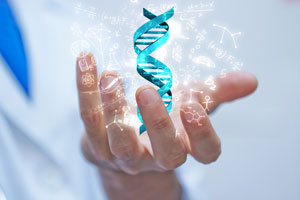Fans of the CSI shows know that DNA is the gold standard of evidence in criminal investigations. Unless a criminal is wearing gloves and covered from head to toe in protective clothing, there is a good chance that the criminal will leave traces of DNA at the crime scene.
Crime scene investigators are taught that “every contact leaves a trace” of DNA, a principle that is attributed to Edmond Locard. The transfer of just a few skin cells may be enough to provide investigators with “touch DNA” that can be matched to a known suspect or to someone whose DNA appears in a database. Touching a doorknob or any other object may leave a trace that can be used to identify the culprit.
Given the power of “touch DNA” to unlock the mysteries of a crime scene, investigators often conclude that finding the DNA from someone who denies ever visiting the crime is proof of guilt. New studies, however, establish that DNA can be transferred to a crime scene even if the person to whom the DNA belongs has never been there. When that happens, DNA may point the finger of guilt at an innocent person.
The Risk of Inadvertent DNA Transfer
An article in Scientific American warns that police, prosecutors, and juries may be making a mistake when they treat the presence of DNA as infallible proof of guilt. The article spotlights the arrest of a homeless man who was charged with murdering a multimillionaire in Silicon Valley. The arrest was based solely on the discovery of the homeless man’s DNA at the crime scene. Since the man told the police he had never been there and could not explain the presence of his DNA, the police and prosecutors assumed he was the murderer.
The homeless man’s defense team soon found irrefutable evidence of their client’s innocence. The homeless man had been hospitalized before the murder. He was nearly comatose and under constant medical supervision when the crime was committed.
Further investigation revealed that paramedics responded to the crime scene hours after treating the homeless man. The paramedics touched the homeless man, then unwittingly transferred his DNA to the crime scene. If the homeless man did not have proof of his whereabouts during the commission of the crime, he would be facing a wrongful conviction.
A number of studies show how easy it is to transfer someone else’s DNA. If you shake hands with someone, that person’s DNA will probably be left on the next object you touch. If the next object you touch is later used as a murder weapon, an innocent person may become the prime suspect. Laundry workers who touch clothing, hotel maids who touch the trash that they empty from a bathroom wastebasket, and children who hug their parents may be transferring someone else’s DNA to objects they touch throughout the day.
Defenses to DNA evidence have traditionally been built upon the contamination, degradation, or mislabeling of samples; the failure to follow proper analytical protocols; and the use of expert statisticians to explain why the statistical probabilities of DNA matches are overstated by DNA experts. When it comes to “touch DNA,” a stronger defence — and a greater risk of a wrongful conviction — may be the possible transfer of a defendant’s DNA to a crime scene by a third party.
The Need for Caution in Forensic Science
The new revelation about DNA fallibility comes at a time when other forensic sciences are subject to increasing scrutiny. Courts are becoming increasingly skeptical of forensic scientists who present doubtful evidence as if it were based on irrefutable science.
Based solely on microscopic examination, crime lab analysists have often testified that a hair found at a crime scene came from a defendant, when an examination of the physical characteristics of hair can only support a conclusion that the hair is similar to the defendant’s hair. The FBI admitted in 2013 that the scientific “testimony used to convict thousands of individuals was scientifically invalid.” Earlier this year, a judge overturned a 1987 conviction because it was founded on unreliable hair evidence.
Bite mark evidence is even more suspect. The California Supreme Court recently granted William Richards a new trial on the ground that the bite mark expert who testified against him later admitted that his scientific methodology was unreliable. Richards’ conviction of murdering his wife was based on circumstantial evidence, including the expert’s opinion that Richards’ teeth matched a photograph of an alleged bite mark on wife’s hand. The new trial was granted only after California enacted a law permitting convictions to be overturned on the basis of an expert’s admission of error during the original trial.
The science of DNA is on firmer footing than bite mark or hair analysis, but expert witnesses who testify about DNA still need to exercise the caution that is the trademark of an honest scientist. The presence of trace DNA is circumstantial evidence, but in the absence of corroborating evidence it should not be seen as proof of guilt. The Scientific American article emphasizes that point by quoting the author of Inside the Cell: The Dark Side of Forensic DNA: “If you don’t bring in the appropriate amount of skepticism and restraint in using the method, there are going to be miscarriages of justice.”




